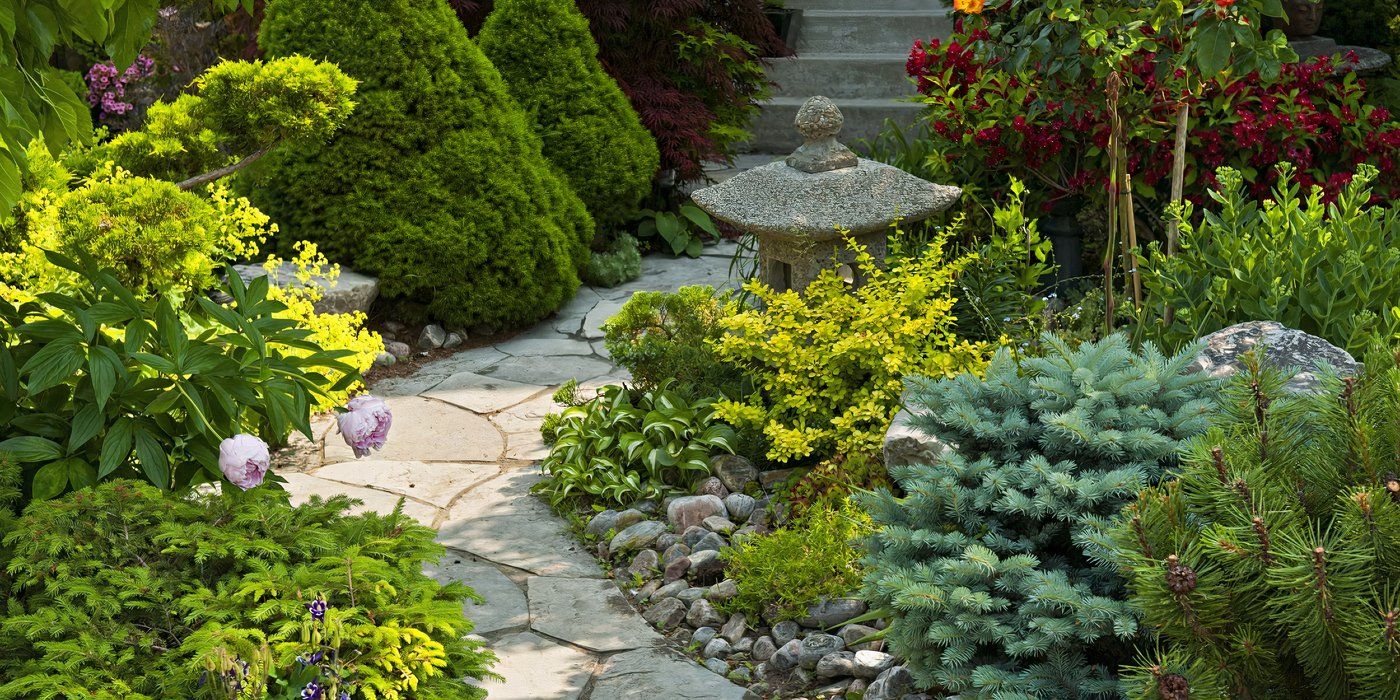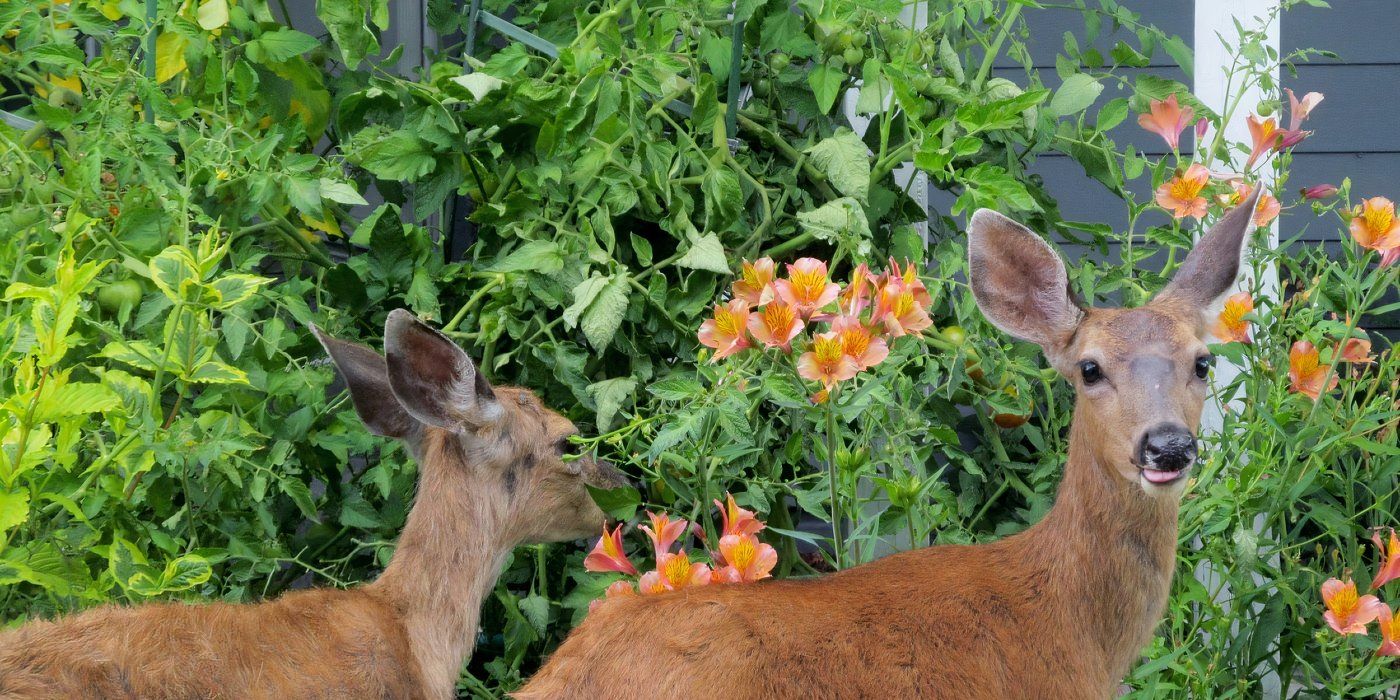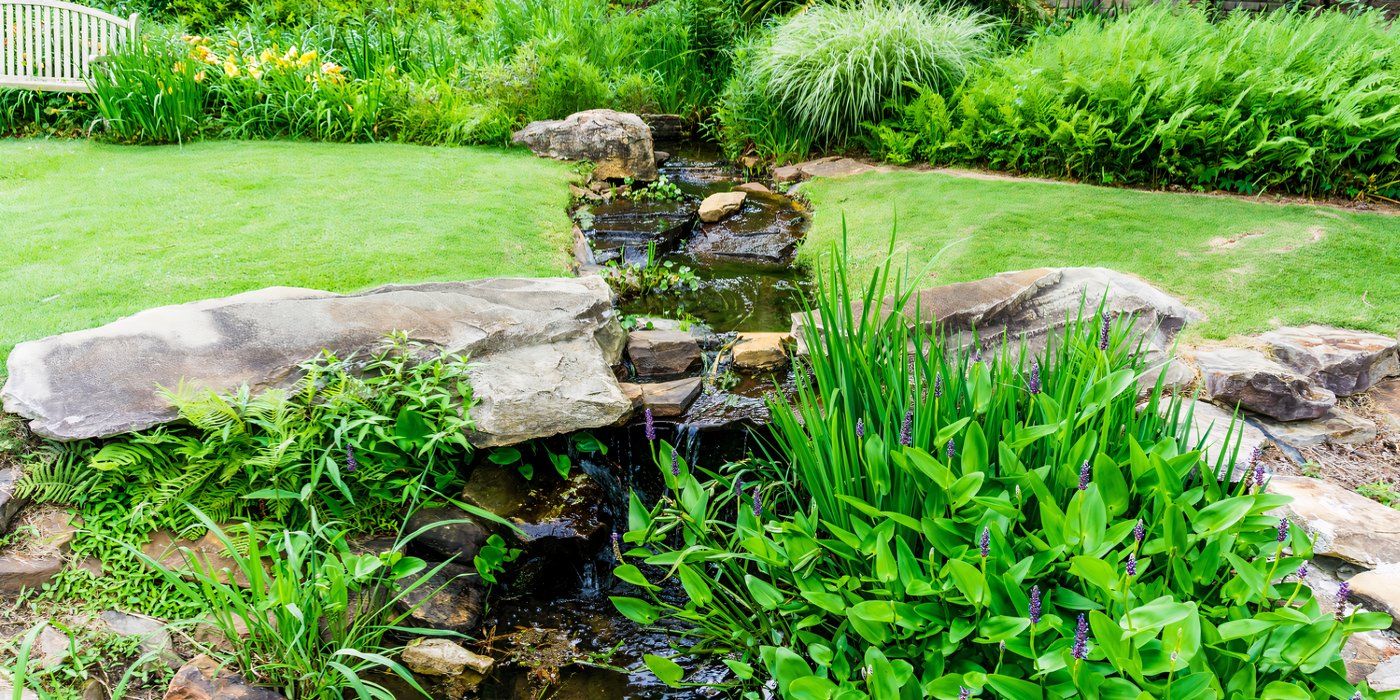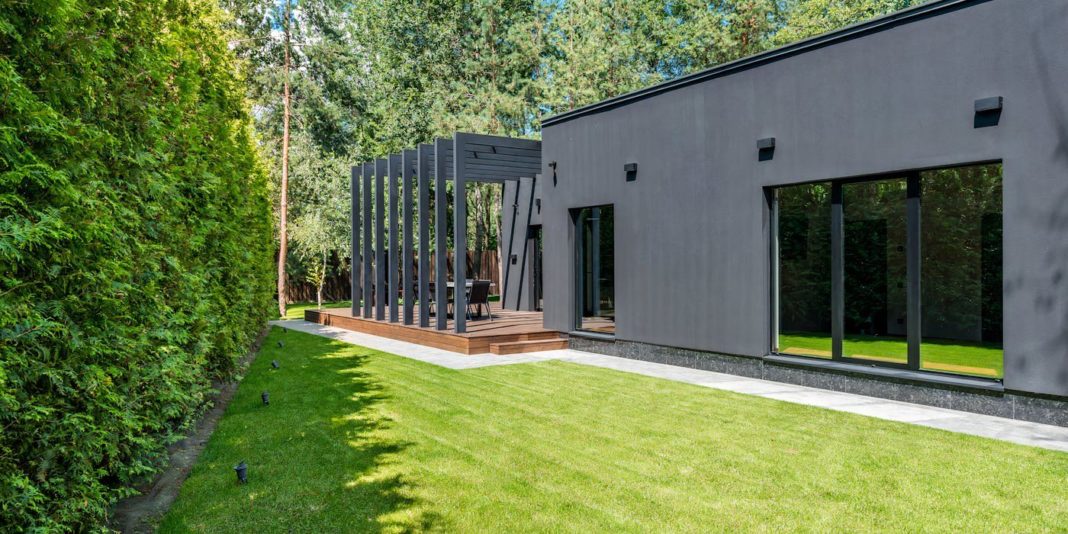Summary
- Build privacy screens from tall, dense plants to protect and isolate them
- Use windbreaks with thick, layered plants to protect your garden from strong winds
- Ensure that your garden is free of pests, such as deer, by cultivating plants that provide them with protection
A Beautiful garden Provides a tranquil sanctuary from the challenges of daily life. It takes a well thought out and planned space, with details carefully considered Garden plants Harmony and balance are achieved through the combination of features. To achieve and preserve this tranquility, it is essential to safeguard your garden from harmful influences like wind, pests, and foot traffic
By incorporating the right Backyard ideas And Landscaping plants , you can create a space that not only looks beautiful but also provides a safe and nurturing environment for your plants. Learn how to construct a secure garden that provides ample space for your plants and allows you to enjoy the outdoors
Create Garden Privacy Screens
Privacy screens provide both privacy and security

The presence of privacy in a well-kept garden provides secluded living and protection from the outside world. Incorporating the right Landscaping plants Provides a means of safeguarding your garden from the elements::
- Prying eyes
- Noise
- Wind
Privacy screens Not only looks great in your garden but it also has a lot of other functions, making your outdoor space feel more comfortable. Placed in a specific location, the screens can facilitate the creation of isolated spaces for::
- Relaxation
- Dining
- Gardening
- Creating a sense of calm and tranquility in your living space
|
Landscaping Ideas for Creating Privacy Screens |
|
|---|---|
|
Opt for Fast-growing privacy trees Thinly covered shrubs that obstruct one’s view |
|
|
Mix different plant shapes and heights to achieve a more natural, multi-layered effect |
|
|
Incorporate Climbing vines Trellises or fences provide privacy and verticality |
|
|
Select Evergreen plants To maintain privacy throughout the year, they keep their leaves around all year round |
|
|
Place privacy screens around Outdoor seating areas , patios, or the garden’s perimeter to maximize seclusion |
|
|
Add elements like bamboo DIY trellises , or stone to enhance the structure of your privacy screens |
|
Plants and foliage together to create a more private environment Hardscape elements Including wooden or metal panels, which will enhance your surroundings Garden ideas Moreover, form an attractive yet functional obstruction. This method preserves privacy throughout the year and integrates seamlessly into your landscape design
Incorporate Garden Windbreaks
Prevent your garden from being exposed to strong winds

The presence of wind is one of the reasons why The most obnoxious components in a garden , damaging plants and Making outdoor spaces uncomfortable
Windbreaks are a practical solution for safeguarding your garden As well as adding texture and beauty To the landscape. The natural barriers:
- Help reduce wind speed
- Prevent soil erosion
- Prevent the fallibility of delicate plants
Windbreaks Besides improving microclimates in your garden, they provide shade for delicate plants and enable comfortable outdoor activities. A slick garden can be transformed into a tranquil retreat with their swiftness
|
Backyard Ideas to Incorporate Windbreaks |
|
|---|---|
|
Build a windbreak that is made up of layers of trees, shrubs, and grasses at different elevations |
|
|
To prevent wind from reaching your back, select thick foliage like evergreens or tall grasses |
|
|
To prevent wind from blowing towards your garden, it is recommended to plant windbreaks along the edges of your lawn, especially on the windward side |
|
|
Identify trees that are resistant to high winds, such as pines, spruces, or bamboo |
|
|
Avoid overgrowing plants, as they require space to grow and form a robust, long-lasting barrier |
|
Plants can be integrated with structures like buildings to offer optimal wind protection Garden fences Or walls. By combining the two, your garden will be protected and more comfortable from wind
The direct movement of people through Plants
Orient foot traffic with targeted plant growth

In any Backyard ideas The maintenance of your garden’s beauty and functionality is dependent on directing foot traffic, especially in landscaping
- Without clear Garden paths , visitors may unintentionally trample delicate Landscaping plants Disrupt the natural flow of your outdoor area
- Place specific plants in order to direct traffic, create designated paths, and leave the most vulnerable parts unattended
- The plants can serve as natural barriers or supplement the existing ones Focal points , helping to define the boundaries of your garden while also adding texture and color
This method is not the sole solution Preserves your plants but also enhances the aesthetic appeal Enhancing the ambiance and organization of your garden
|
Landscaping Ideas For Directing Traffic |
|
|---|---|
|
Use low-growing ground covers |
Ground covers Can create natural pathways that gently guide foot traffic while remaining low to the ground. The plants create subtle boundaries without obstructing movement |
|
Use tall plants as a marker |
Taller plants, such as Ornamental grasses Positioned at key points in your garden, sunflowers can serve as natural markers and guide visitors to specific areas |
|
Designate paths with plants that are bent |
To create an organic flow in your garden and encourage visitors to follow the natural direction of the space, use plants like lavender or boxwood to create curving paths instead of creating straight lines |
|
Plant in contrasting textures |
Plants with diverse textures, such as delicate ferns and succulents mixed together, can be visually distinguished to indicate their movement Garden beds The contrast highlights walkways and ensures that visitors remain on their right path |
|
Plant in groups for emphasis |
Arrangement plants in small, circular formations to emphasize specific spots, such as the start of a walkway or an ornamental focal point in the garden. By forming clusters, you can prevent foot traffic from entering more vulnerable parts of your garden |
Some of the Best low-growing ground covers For garden pathways include:
- With its fragrant foliage and small, purple flowers that attract pollinators throughout the growing season, creeping thyme is an excellent choice
- For shaded areas, Irish moss creates a lush green carpet that adds an earthy feel to your garden paths
- A variety of colors and textures can be derived from sedum, which is a drought-resistant succulent that thrives in sunny regions
- Bright and colorful phlox blooms in spring create an interesting carpet effect that can be added to your walkways or pathways
- The Japanese berry, also called bugleweed, has beautiful foliage and blue flowers, and can be grown in sunny or shaded areas
To create a welcoming environment for your garden, select plants that blend well with colors and textures to draw in more visitors
Deter Destructive Animals
Keep your garden free from unwanted pests

Your garden can be ruined by animals like deer and rabbits, who can infest your beloved plants Landscaping plants Neglecting your meticulously planned out plan. Selecting specific Plants that repel deer By incorporating other pests, you can create a barrier that shields your garden from harmful chemicals and hazards
Young trees and shrubs can be permanently damaged if they are being hunted by deer As per The Morton Arboretum
Several plants have characteristics that animals dislike, making them an excellent choice for safeguarding your garden. The right placement of these plants can enhance the visual appeal of your space
|
Backyard Ideas to Deter Destructive Animals |
|
|---|---|
|
Garden herbs Certain types of animals, such as deer and rabbits, are unable to cope with the strong scents of mint, rosemary, and sage lavender. By planting these around your garden, you can make the scent less offensive |
|
|
The presence of tall or fragile plants like holly or barberry creates physical barriers that make it challenging for animals to get near your garden |
|
|
Certain plants, like Hot peppers Deer have an unpleasant smell associated with garlic. By planting these near areas that are vulnerable, it can discourage pests from entering |
|
|
Create a layered defense |
The use of layered, fragrant and thorny plants can serve as an even more potent deterrent. Create a multi-layered defense by planting lavender near the exterior and surrounding yourself with thorny shrubs |
|
Employ plants with bitter-colored foliage |
The leaves of plants like marigolds and lavender have a bitter flavor that animals find repulsive. Planting them in areas where animals are most likely to be foraged can help with this |
Plants should be positioned near the edges of your garden or along pathways where animals are prone to wandering
Utilize vegetation to direct Water Flow
Manage water movement by implementing strategic planting methods

Maintaining a well-drained garden requires careful attention to drainage, as any inadequate drainage can cause soil erosion and waterlogging Landscaping plants By growing in the appropriate areas, you can naturally distribute water to your plants where it is needed, and prevent unnecessary rain from damaging your garden. The plants can aid in water absorption, minimize runoff, decrease water flow, and prevent erosion
|
Landscaping Ideas For Managing Water Flow |
|
|---|---|
|
Ground covers such as creeping thyme or clover can be planted on slopes or bare soil to prevent erosion and slow down water flow |
|
|
To reduce runoff, plant plants on sloped land that follow the contour lines to channel water into specific areas |
|
|
Position plants like Ferns The growth of irises in damp environments is common, and they can form quickly in areas where water accumulates |
|
|
Create swales or berms |
Build swales or berms from plants, which can help to divert water away from flood-prone areas |
|
Opt for drought-tolerant species |
In dry regions, it is recommended to cultivate plants like lavender or yucca that can handle both excess and insufficient water |
Integrate hardscaping traits into the growth of plants Rain gardens Permeable pathways to enhance water management. Through this combination, the garden will become more sustainable and resilient, freeing it from water-related concerns while promoting healthier plant life
Create a Safe Haven, AS anctuary: Your Garden is your sanctuary
By taking measures, you can maintain the health of your garden and make it a peaceful retreat from the elements. With the right Landscaping plants With thoughtful design, a space can be not only visually stunning but also resilient to weather conditions. By utilizing privacy panels, windbreaks, and efficient water management techniques, you can create a garden that is both beautiful and comfortable
Start today and your garden will be protected for the whole year!
